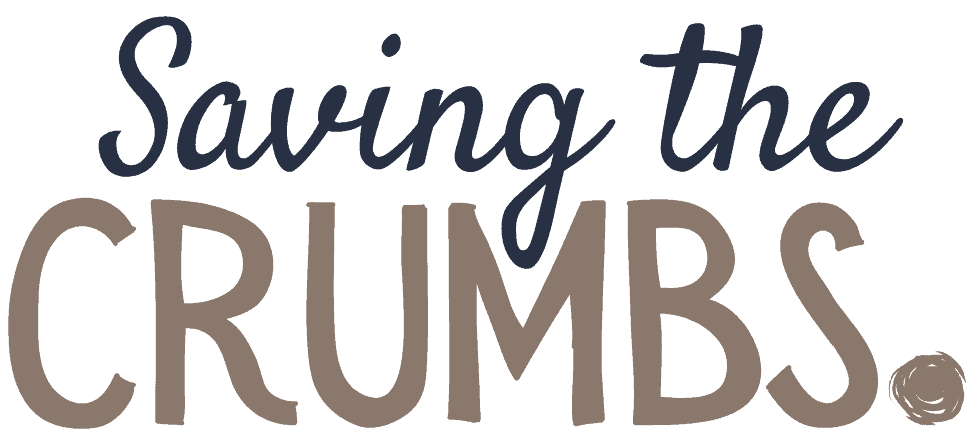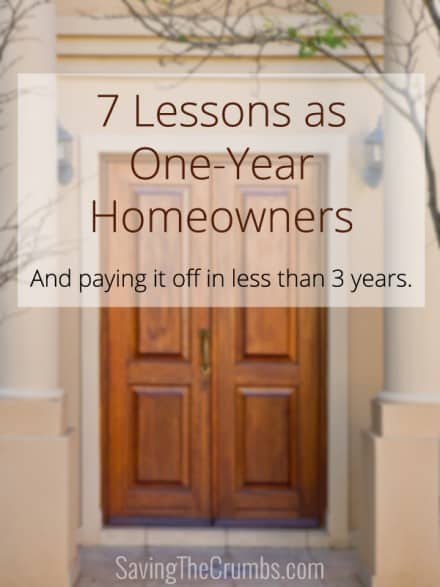We Crumb Savers are sometimes accused of cutting corners on quality in purchases simply to pay the lowest price. While it’s true that we don’t advocate brand names for everything, we all know that sometimes the most frugal thing to do long-term is to pay a bit more to get quality. However, often I find that these sentiments are expressed as excuses to justify expensive purchases or worse, BORROWING MONEY in order to make those purchases (horrors!).
Ever heard rationales like these?:
- New iPhone’s out? Gonna get in line for the latest one since it’s “way better” than the older model. I better stick with my overpriced 2-year contract so I can get that new phone for $199.
- Need a new appliance? Let’s buy it brand new, full price from Best Buy. They have 12 month financing! They’ll even deliver it for free!
- Car is acting up? Let’s hit up the dealer to test-drive the latest model, I heard it’s got much better safety features. Our current car payment is nearly up anyway.
- Ready to buy a house? We should just spend more and buy the bigger house that we don’t need right now. It’s going to be where we raise our kids, after all.
I’ll resist the urge to launch into a rant about all our excuses for wasteful spending, but I confess that I love quality as much as the next guy so I DO want to address the important issue of how to own quality products while still saving money—or as I like to call it, the art of having our cake and eating it too.
The Discipline of Delayed Gratification
It’s been said that good things come to those who wait. It’s true. The ability to delay gratification is one of the big differences between those who succeed with money and those who don’t. (Or just those who succeed in general!) Honing this discipline is essential to master the art of having our cake and eating it too. It’s not just masochism. There are very real reasons why delayed gratification can result in better things for us. Here are just 4:
- You save up so you don’t have to borrow.
- You have time to research in order to get the best deal.
- You may realize you don’t need as much as you thought you needed.
- Another option may come along to solve your need.
The Art of the Wait
It’s nice when we have the luxury to wait for something to go on sale or to find a better deal, but sometimes we just NEED it NOW! This is where we apply some technique to waiting. Yes, that’s right, waiting isn’t simply sitting around and doing nothing. Here’s an example from our lives recently.
When we first moved into our house, we needed a vacuum cleaner right away. But rushing the purchase would have forced us into a bad deal, so we bought a decent $15 one at the thrift store to use while we saved up and waited for a good one. After a few months of saving and research and using our good-enough-but-not-the-best-quality vacuum, we found a new $150 Shark Vacuum selling for $70 (actually free with Amazon gift cards earned through SwagBucks). We bought it and gave the $15 one back to the thrift store. So we spent $85 total and ended up with a brand-new vacuum worth $150, all without compromising a clean house. We were able to have our cake and eat it too because we were willing to practice the art of the wait. (If we were really hardcore, we probably could’ve sold the old vacuum for $15 on Craigslist.)
A vacuum cleaner is a small fry compared to the larger purchases that this strategy can apply to. We bought a $120 fridge off of Craigslist to hold us over until we can find a nicer one, but we discovered that we’re perfectly happy with this one and won’t need to upgrade for a while. I’ve also explained a way to upgrade your car in a previous post, Driving Off a Cliff with a New Car Loan so I won’t rehash it here. But the basic premise is the same: Buy something that will get you by for now so you have time to save, research, and hunt for a deal on the nice one, then sell the older car and buy the nicer one with cash.
But can mastering the art of the wait help me have my cake and eat it too when it comes to the house of our dreams?
Waiting for the Dream Home
Let’s take a look at two families who both want a house that costs $300,000. The “Biggs Family” go straight for the big house and they buy it with a conventional 30-year mortgage, while the “Smalls Family” employ the art of the wait by starting out with a smaller $150,000 house and then moving up later to a house the size of the “Biggs” house ($300,000). Let’s see how the numbers shake out.
| Biggs | Smalls | |
| $300,000 | House Price | $150,000 |
| $30,000 | Down Payment | $30,000 |
| $270,000 | Balance | $120,000 |
| 30 years @ 4.5% | Terms | 10 years @ 4.5% |
| $1,368.05 | Monthly Payment | $1,243.66 |
| 10 years total payments: | $149,239 | |
| Upgrade House Price | $300,000 | |
| Down Payment | $150,000 | |
| Balance | $150,000 | |
| Terms | 10 years @ 4.5% | |
| Monthly Payment | $1,554.58 | |
| 10 years total payments: | $186,549.14 | |
| AFTER 30 YEARS | ||
| $522,498 | Total Amount Paid | $365,788 |
| $0 | Amount Saved | $156,710 |
As you can see, both families end up in their $300,000 dream home, but only the Smalls were able to have their cake and eat it too. It’s all because they mastered the art of the wait. By waiting in a smaller home first and paying it off before moving up to the big home, the Smalls managed several huge victories over the Biggs:
- They ended up paying off their dream home a full TEN YEARS before the Biggs.
- Their mortgage payment was lower for the first ten years, slightly higher for the second ten years, and of course, they had NO payments in their third ten years.
- They saved enough money compared to the Biggs in total that they could have gone back and bought their first house back in CASH with the surplus. They could end up owning TWO houses instead of one simply because they had the discipline to delay gratification.
And this example didn’t even include how much the Smalls could have earned by investing the extra they saved this entire time! Sometimes it REALLY pays to wait!
Mastering the Art
So I hope you see that the art of having your cake and eating it too isn’t complicated. It’s simply mastering the ability to delay gratification, by settling for something less now in order to get something better later. In this age of instantaneous app downloads on our smartphones (who goes to the store to buy installation discs anymore?), on-demand media streaming (remember renting movies on VHS tapes?), and free 2-day Amazon Prime Shipping, it’s no wonder that we expect to have everything RIGHT NOW. We need to discipline ourselves to not fall prey to this entitlement mentality and realize that good things really do come to those who wait.
What about you? What do you think about delayed gratification? How does it impact your financial decisions?







